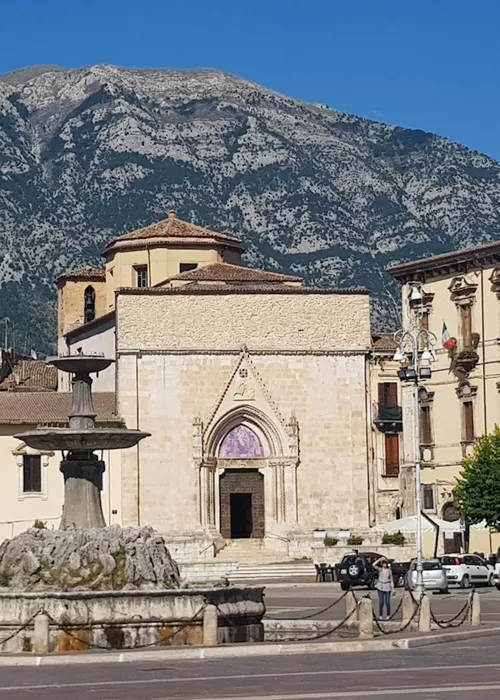The Running Madonna of Sulmona, for an Easter in the Abruzzo tradition
3 minutes
One of the most unique and touching Easter events in Italy is the "Madonna che scappa di Sulmona” (Running Madonna of Sulmona), a great opportunity to spend Easter in Abruzzo and take part in a truly moving ritual.
Let's discover a heartfelt regional tradition, unveiling the origins of the feast, rituals and customs linked to the Madonna che scappa di Sulmona.
What are the origins of the feast?

The feast of the Madonna che Scappa dates back to ancient times. In fact, the tradition is documented for certain from the 19th century onwards, but its roots go back at least to the 1600s, perhaps even to the Middle Ages. The event involves the whole town, and any visitors who happen to be in the area. The festival takes place on Easter Sunday, at midday sharp in Piazza Garibaldi, immediately after the Easter mass. Get there early if you want to find a spot.
The great feast enacts the ritual of Our Lady fleeing: but from or to what? The event is centred around Our Lady's encounter with her resurrected son: a moment so dramatic and moving that, despite the crowd, it evokes a silence full of anticipation, until the instant when Our Lady 'flees' to meet her son.
The rite and meaning of the Madonna fleeing, combining folklore and emotion

The statue of the Madonna is in the Church of San Filippo, and is preserved behind glass. The members of the Confraternity of Our Lady of Loreto, clad in green, arrive carrying the banner, the typical lanterns and the statues of St Peter and St John. They are charged with announcing to Mary the resurrection of her son, although, according to tradition, she does not believe them. John comes forward first, but the gate remains closed. Then it is Peter's turn, but he is unsuccessful. Finally John tries again and convinces the Madonna to come out.
The statue of the Madonna parades, slowly and in absolute silence, into the centre of the square. She is dressed in mourning clothes, and still in disbelief. Then she catches sight of the risen Christ under one of the arches of the "Acquedotto Svevo", and it is then that she begins to run to be reunited with her son. As the statue, carried on the shoulders of the brethren, runs, the Madonna's black mantle changes, giving way to a green one. From her hand, which initially holds a handkerchief with which to wipe her tears, a rose emerges. At the same time, twelve white doves rise into the air, fireworks explode and the crowd bursts into applause.
The run, and wishes for the coming year

The transition from the black to the green mantle takes place by means of a special mechanism hidden in the statue, and everyone watches this moment with great attention: if everything goes smoothly, the year will be auspicious.
If the mechanism jams, the doves do not take flight or someone stumbles during the run, it is considered to be a bad sign. The statue is said to have fallen twice, in 1914 and 1940, foreshadowing the world wars that would break out shortly thereafter.
Discover Sulmona, the city of sugared almonds

After the festivities, spend some time discovering the pretty town of Sulmona, which has much to offer.
First of all, there are its famous sugared almonds, produced in this town since the 1st century BC. The oldest sugared almond factory in the world can be found here, dating back to 1783. Also try the red garlic of Sulmona, which is a Slow Food presidium.
The old town is centred around Corso Ovidio, which is dedicated to the Latin author born here. Admire the Gothic façade of the Cathedral of San Panfilo, the mediaeval Church of San Gaetano, the Renaissance palaces Sanità and Tabassi, and the church-palace of Santissima Annunziata. Not far from the centre is the Badia Morronese Abbey, which dates back to 1241 and is certainly worth a visit.


















